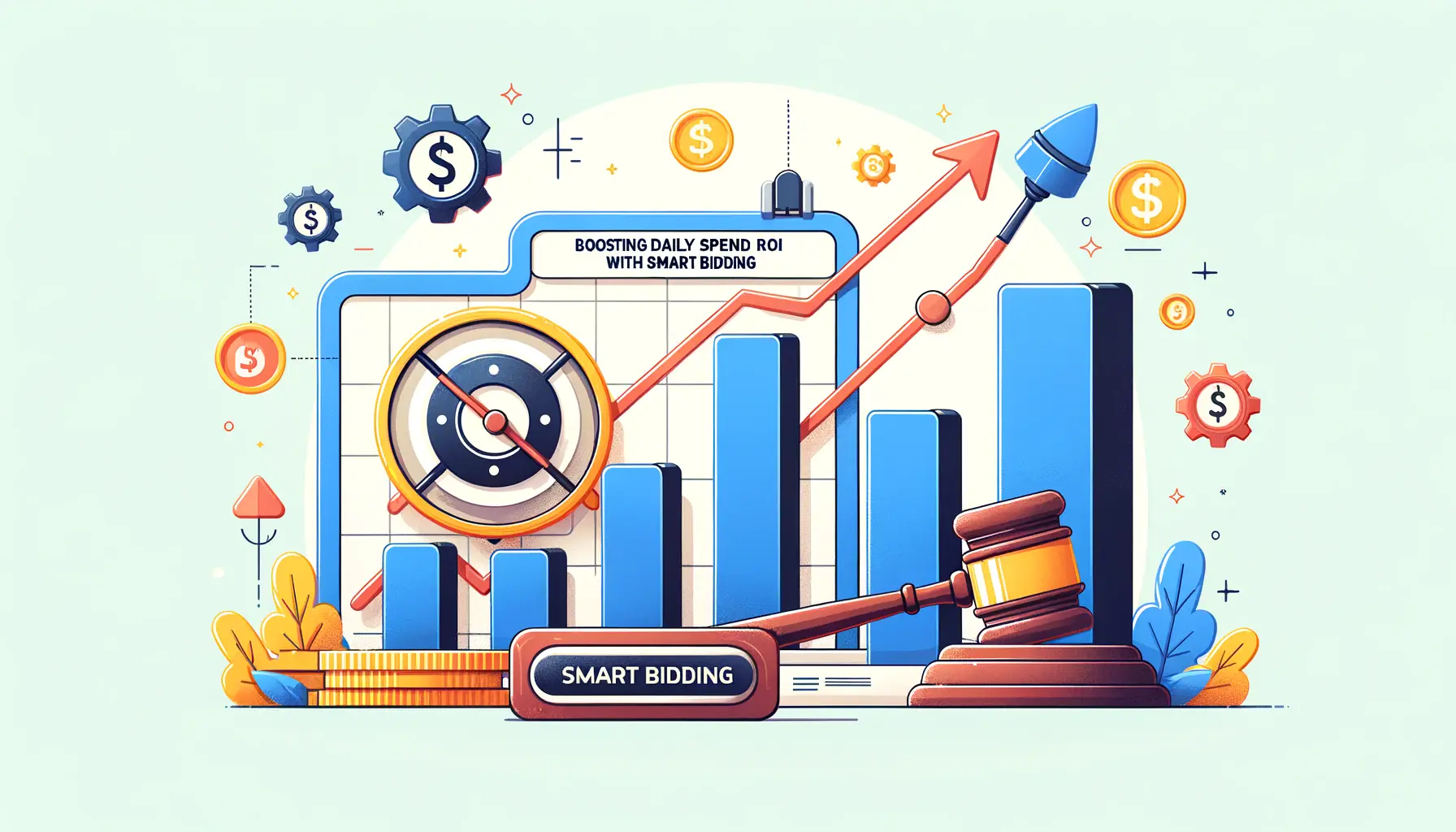Understanding the return on investment (ROI) for SEO campaigns is crucial for any business operating online.
In today’s digital age, where the internet serves as the primary platform for research, shopping, and entertainment, ensuring your website is visible to your target audience can significantly impact your bottom line.
SEO, or Search Engine Optimization, is a strategic approach to increase a website’s visibility in search engine results, thereby attracting more organic traffic.
But how do you measure the success of these efforts in financial terms?
This is where ROI calculation comes into play, offering businesses a clear picture of the value generated from their SEO investments.
Calculating the ROI of SEO campaigns involves a comprehensive understanding of both the direct and indirect benefits these efforts bring to a business.
Unlike paid advertising, where results can be immediately visible, SEO is a long-term strategy.
Its impact grows over time, contributing not only to increased traffic but also to brand credibility and customer loyalty.
Therefore, assessing the ROI of SEO campaigns requires a detailed analysis that goes beyond surface-level metrics to truly understand the financial gains against the investments made.
- Understanding SEO and Its Importance
- Calculating ROI for SEO Campaigns
- Impact of SEO on Business Growth
- SEO Strategies for Maximizing ROI
- Measuring and Analyzing SEO Performance
- SEO Trends and Future Directions
- Optimizing SEO for Different Industries
- Unlocking the Full Potential of SEO Campaigns
- FAQs on ROI Calculation for SEO Campaigns
Understanding SEO and Its Importance
Before diving into the intricacies of ROI calculation, it’s essential to grasp what SEO entails and why it’s a critical component of modern digital marketing strategies.
SEO encompasses a range of techniques and practices aimed at improving a website’s ranking in search engine results pages (SERPs).
This includes keyword optimization, content creation, link building, and enhancing site usability and performance.
The goal is to make a website more attractive to search engines like Google, thereby increasing its visibility to users searching for related topics, products, or services.
The importance of SEO cannot be overstated.
In a digital landscape where the majority of online experiences begin with a search engine, being visible on the first page of search results can significantly increase a website’s traffic.
More traffic often translates to more leads, sales, and ultimately, revenue.
However, the benefits of SEO extend beyond just traffic.
High rankings in search results also contribute to brand authority and trust, as users tend to perceive the top results as more credible and authoritative in their respective fields.
Key Components of SEO
- Keyword Research: Identifying the terms and phrases your target audience uses to search for your products or services.
- On-Page Optimization: Enhancing individual web pages to rank higher and earn more relevant traffic.
- Content Marketing: Creating valuable, relevant content to attract and engage a target audience.
- Link Building: Acquiring hyperlinks from other websites to your own, which search engines use as signals of credibility.
- Technical SEO: Improving the technical aspects of a website to increase the ranking of its pages in the search engines.
Each of these components plays a vital role in a successful SEO strategy.
By optimizing these areas, businesses can improve their search engine rankings, attract more organic traffic, and ultimately, enhance their ROI from SEO campaigns.
A comprehensive SEO strategy is essential for improving website visibility and driving organic traffic, which is crucial for achieving a positive ROI from SEO campaigns.
Calculating ROI for SEO Campaigns
Calculating the ROI from SEO campaigns is a critical process that helps businesses understand the effectiveness of their SEO investments.
Unlike traditional advertising, where costs and returns can be more straightforward to measure, SEO’s indirect benefits and long-term nature make ROI calculation a bit more complex.
However, by breaking down the process into manageable steps and focusing on key metrics, businesses can gain valuable insights into how their SEO efforts are contributing to their overall financial goals.
The first step in calculating ROI for SEO involves determining the total costs associated with your SEO efforts.
This includes direct costs like hiring SEO specialists or agencies, purchasing SEO tools, and creating content.
Additionally, indirect costs such as the time spent by in-house teams on SEO-related tasks should also be considered.
By quantifying these investments, businesses can set a baseline against which to measure the returns generated from their SEO campaigns.
Identifying and Measuring SEO Returns
- Increased Traffic: One of the most direct benefits of successful SEO is an increase in organic traffic to your website. Tools like Google Analytics can help track this growth, providing insights into how many more visitors your site is attracting due to improved search engine rankings.
- Conversion Rate Improvement: Not all traffic is equal. The ultimate goal of driving more visitors to your site is to convert them into customers. By analyzing conversion rates before and after implementing SEO strategies, businesses can assess how effectively their SEO efforts are leading to tangible actions, such as purchases or sign-ups.
- Customer Acquisition Cost (CAC): SEO can also impact the cost of acquiring new customers. By comparing the CAC before and after SEO campaigns, businesses can evaluate how SEO is making customer acquisition more cost-effective.
Once the total costs and returns have been identified and measured, calculating the ROI of your SEO campaigns becomes a matter of applying the formula: [(Total Returns – Total Costs) / Total Costs] x 100.
This calculation will yield the ROI percentage, offering a clear picture of the financial impact of your SEO efforts.
It’s important to remember that SEO ROI may not be immediately apparent. SEO is a long-term strategy, and its full benefits often unfold over several months or even years.
Impact of SEO on Business Growth
The impact of SEO on business growth extends far beyond just improving website rankings on search engines.
A well-executed SEO strategy can significantly contribute to various aspects of business development, including brand visibility, customer engagement, and ultimately, revenue generation.
By enhancing the online presence, SEO makes it easier for potential customers to find and interact with your business, leading to increased opportunities for growth.
One of the key ways SEO drives business growth is by targeting quality traffic.
Unlike traditional advertising, which often relies on reaching as many people as possible, SEO focuses on attracting visitors who are actively searching for information related to your products or services.
This targeted approach leads to higher conversion rates, as the traffic driven by SEO is more likely to be interested in what your business has to offer.
Building Brand Authority and Trust
SEO also plays a crucial role in building brand authority and trust.
Websites that appear on the first page of search engine results are often perceived as more trustworthy and credible by users.
By securing top rankings for relevant keywords, businesses can establish themselves as leaders in their industry, enhancing their reputation and attracting more customers.
This increased visibility not only drives traffic but also reinforces the brand’s authority, contributing to long-term business growth.
Moreover, SEO strategies that focus on content creation can further enhance brand authority.
By providing valuable and informative content that addresses the needs and questions of your target audience, businesses can engage with potential customers at different stages of the buying journey.
This not only improves the chances of conversion but also fosters a sense of trust and loyalty among customers, encouraging repeat business and referrals.
Enhancing User Experience
Another significant impact of SEO on business growth is the improvement of user experience (UX) on websites.
Search engines favor websites that offer a positive UX, including fast loading times, mobile responsiveness, and easy navigation.
By optimizing their websites for SEO, businesses are also enhancing the overall experience for visitors.
This not only contributes to higher rankings but also increases the likelihood of visitors staying on the site longer, exploring more pages, and ultimately making a purchase or inquiry.
Furthermore, a positive UX fosters customer satisfaction and loyalty, leading to repeat visits and positive word-of-mouth.
Satisfied customers are more likely to recommend your business to others, expanding your reach and contributing to sustained business growth.
Investing in SEO is not just about improving search engine rankings; it’s about leveraging the power of search to build a stronger, more visible, and more engaging brand that resonates with your target audience.
SEO Strategies for Maximizing ROI
To maximize the ROI of SEO campaigns, businesses need to adopt a strategic approach that aligns with their overall marketing objectives and targets the right audience.
A well-planned SEO strategy not only improves rankings but also drives quality traffic, enhances user experience, and increases conversion rates.
Here are some key strategies to consider for boosting your SEO ROI:
Keyword Research and Optimization
At the heart of any successful SEO strategy lies thorough keyword research.
Identifying the right keywords to target is crucial for attracting relevant traffic to your website.
Here’s how to approach keyword research and optimization:
- Use tools like Google Keyword Planner, Ahrefs, or SEMrush to discover keywords related to your products or services.
- Analyze search intent to ensure the keywords align with what your target audience is looking for.
- Incorporate long-tail keywords to capture more specific searches and improve the chances of conversion.
- Optimize your website’s content, meta tags, and URLs with the selected keywords for better visibility.
Content Marketing
Content is a powerful tool for driving SEO success.
Creating high-quality, relevant content not only attracts traffic but also engages and converts visitors.
Here’s how to leverage content marketing for SEO:
- Create informative blog posts, articles, and guides that address the needs and questions of your target audience.
- Use a variety of content formats, such as videos, infographics, and podcasts, to cater to different preferences.
- Ensure your content is optimized for search engines while still providing value to readers.
- Promote your content through social media, email marketing, and other channels to increase its reach.
Link Building
Building high-quality backlinks from reputable websites is essential for improving your site’s authority and search engine rankings.
Here are some effective link-building strategies:
- Guest blogging on relevant websites to gain backlinks and exposure.
- Creating shareable content that naturally attracts links from other sites.
- Participating in industry forums and discussions to increase visibility and earn backlinks.
- Reaching out to influencers and industry leaders for collaborations and mentions.
Technical SEO
Ensuring your website is technically optimized is crucial for both search engines and users.
Focus on the following technical SEO aspects:
- Improve site speed by optimizing images, leveraging browser caching, and minimizing code.
- Ensure your website is mobile-friendly to cater to the growing number of mobile users.
- Fix broken links and errors that can negatively impact user experience and rankings.
- Implement structured data to help search engines understand your content better.
By focusing on these strategic areas, businesses can significantly enhance their SEO performance, driving more traffic, improving conversions, and ultimately achieving a higher ROI from their SEO campaigns.
Measuring and Analyzing SEO Performance
To ensure the effectiveness of your SEO strategies and maximize ROI, it’s essential to measure and analyze your SEO performance regularly.
This involves tracking key metrics and using analytics tools to gain insights into your website’s search visibility, traffic, engagement, and conversions.
Here’s how to approach the measurement and analysis of your SEO efforts:
Key SEO Metrics to Track
Understanding which metrics to focus on can help you evaluate the success of your SEO strategies.
Consider tracking the following key performance indicators (KPIs):
- Organic Traffic: The number of visitors coming to your site through search engines. An increase in organic traffic indicates improved search visibility.
- Keyword Rankings: The positions your website holds in the search engine results pages (SERPs) for targeted keywords. Higher rankings can lead to more visibility and traffic.
- Bounce Rate: The percentage of visitors who leave your site after viewing only one page. A lower bounce rate suggests that your content is relevant and engaging to your audience.
- Conversion Rate: The percentage of visitors who take a desired action on your site, such as making a purchase or filling out a contact form. Improvements in conversion rate indicate that your SEO efforts are driving valuable traffic.
Utilizing Analytics Tools
Analytics tools play a crucial role in measuring SEO performance.
Google Analytics is a widely used tool that provides comprehensive insights into your website’s traffic, user behavior, and conversions.
Here’s how to make the most of analytics tools for SEO analysis:
- Set up goals in Google Analytics to track conversions and key actions on your site.
- Use the Acquisition reports to analyze organic traffic sources and understand which search engines are driving the most traffic.
- Monitor the Behavior reports to assess how visitors interact with your site and identify areas for improvement.
- Analyze the Conversions reports to evaluate the effectiveness of your SEO strategies in driving desired actions.
Adjusting Your SEO Strategies Based on Insights
Regular analysis of your SEO performance allows you to identify what’s working and what’s not.
Use the insights gained from tracking and analytics to make informed decisions and adjust your SEO strategies accordingly.
Consider the following actions:
- Refine your keyword strategy based on which keywords are driving traffic and conversions.
- Enhance your content based on user engagement metrics and feedback.
- Optimize technical SEO aspects to improve site speed and user experience.
- Expand your link-building efforts to increase your site’s authority and rankings.
Measuring and analyzing SEO performance is an ongoing process that requires attention to detail and a willingness to adapt. By staying informed and responsive to data, you can continuously improve your SEO strategies and achieve better ROI.
SEO Trends and Future Directions
The digital landscape is constantly evolving, and with it, SEO strategies must adapt to remain effective.
Staying ahead of the curve in SEO means being aware of current trends and anticipating future directions.
This proactive approach ensures that your SEO efforts continue to yield a high ROI by aligning with the latest search engine algorithms and user behaviors.
Let’s explore some of the key trends shaping the future of SEO.
Focus on User Experience (UX)
Search engines are increasingly prioritizing websites that offer a superior user experience.
This includes fast loading times, mobile optimization, intuitive navigation, and engaging content.
Websites that excel in these areas are more likely to rank higher in search results.
As a result, businesses must focus on enhancing UX as part of their SEO strategy.
This involves regularly auditing your website to identify and address any UX issues that could impact your search rankings and overall user satisfaction.
Importance of Voice Search Optimization
With the rise of digital assistants like Siri, Alexa, and Google Assistant, voice search is becoming an increasingly important aspect of SEO.
Voice searches tend to be more conversational and longer than text queries.
To optimize for voice search, businesses should focus on long-tail keywords and natural language.
Additionally, creating content that directly answers common questions related to your industry can improve your visibility in voice search results.
Artificial Intelligence and SEO
Artificial intelligence (AI) is transforming the way search engines understand and rank content.
Google’s AI algorithm, RankBrain, is a prime example of how machine learning is being used to interpret search queries and deliver more relevant search results.
To stay competitive, businesses must adapt their SEO strategies to be more AI-friendly.
This includes focusing on high-quality, relevant content and user engagement metrics, as AI algorithms are particularly adept at identifying content that best satisfies user intent.
Video Content and SEO
Video content is becoming an essential component of effective SEO strategies.
Videos not only increase engagement and time spent on site but also have the potential to rank in both traditional search results and video search engines like YouTube.
To leverage the power of video for SEO, ensure that your videos are optimized with relevant keywords in the title, description, and tags.
Additionally, embedding videos on your website can enhance content quality and user engagement, further boosting your SEO efforts.
Adapting to the latest SEO trends and future directions is crucial for maintaining a competitive edge in the digital marketplace. By focusing on user experience, voice search optimization, artificial intelligence, and video content, businesses can ensure their SEO strategies remain effective and continue to drive a high ROI.
Optimizing SEO for Different Industries
SEO strategies are not one-size-fits-all.
Different industries face unique challenges and opportunities when it comes to optimizing their online presence.
Tailoring your SEO approach to your specific industry can significantly enhance your ROI by attracting more targeted traffic and improving conversion rates.
Let’s delve into how SEO can be optimized for a few key industries.
E-commerce SEO
E-commerce websites must focus on optimizing product pages and categories to drive sales.
Here are some strategies specific to e-commerce SEO:
- Use detailed, keyword-rich product descriptions to improve visibility and inform potential buyers.
- Optimize product images with descriptive alt tags to enhance rankings in image search results.
- Implement structured data markup to enable rich snippets in search results, improving click-through rates.
- Focus on building high-quality backlinks to product and category pages to increase domain authority.
Local SEO for Small Businesses
For small businesses targeting a local customer base, local SEO is crucial.
Effective local SEO strategies include:
- Claiming and optimizing your Google My Business listing to improve visibility in local search results and Google Maps.
- Incorporating local keywords into your website’s content and meta tags to attract local search traffic.
- Encouraging satisfied customers to leave positive reviews on your Google My Business profile and other review sites.
- Building local backlinks from reputable websites within your community to boost local search rankings.
B2B SEO Strategies
B2B companies often have longer sales cycles and target a more niche audience.
B2B SEO strategies should focus on:
- Creating in-depth, informative content that addresses the specific needs and pain points of your target audience.
- Targeting long-tail, industry-specific keywords that potential business clients are likely to use in their search queries.
- Establishing thought leadership through high-quality blog posts, whitepapers, and case studies to build trust and authority.
- Optimizing for keywords related to your products or services that have a high potential for lead generation.
Healthcare SEO
The healthcare industry requires a careful approach to SEO, given the importance of providing accurate and trustworthy information.
Healthcare SEO strategies should prioritize:
- Ensuring all content is medically accurate and reviewed by healthcare professionals to build trust and credibility.
- Optimizing for health-related keywords while being mindful of the language used to ensure it’s accessible to the general public.
- Securing backlinks from authoritative medical websites and institutions to improve domain authority and search rankings.
- Implementing local SEO tactics for healthcare providers to improve visibility in local search results and attract patients from the surrounding area.
By customizing your SEO strategy to fit the unique demands and characteristics of your industry, you can significantly improve your website’s visibility, attract a more targeted audience, and ultimately, achieve a higher ROI from your SEO efforts.
Unlocking the Full Potential of SEO Campaigns
The journey through the intricacies of SEO and its impact on business growth underscores the transformative power of well-executed SEO campaigns.
As we’ve navigated through the various facets of SEO, from understanding its core principles to strategizing for specific industries, it’s clear that the potential ROI from SEO campaigns is substantial.
However, achieving this requires a nuanced approach, tailored strategies, and a deep understanding of the ever-evolving digital landscape.
Strategic Insights for Maximizing SEO ROI
To truly unlock the full potential of SEO campaigns, businesses must adopt a holistic approach that encompasses not just technical optimization, but also content excellence, user experience, and industry-specific strategies.
The key to maximizing ROI lies in the ability to not only attract targeted traffic but to convert this traffic into loyal customers.
This involves a continuous cycle of measuring, analyzing, and refining SEO strategies to align with business objectives and market dynamics.
Future-Proofing Your SEO Efforts
As we look to the future, the importance of staying ahead of SEO trends cannot be overstated.
The digital world is in a constant state of flux, with new technologies, user behaviors, and search engine algorithms shaping the landscape.
Businesses that remain agile, informed, and ready to adapt will be the ones that reap the most significant rewards from their SEO campaigns.
Embracing innovations such as voice search optimization, AI-driven content strategies, and video marketing will be crucial for maintaining a competitive edge.
Conclusion: The Road to SEO Success
In conclusion, the ROI calculation for SEO campaigns offers businesses a clear lens through which to view the effectiveness of their digital marketing efforts.
By understanding the multifaceted nature of SEO, embracing industry-specific strategies, and staying attuned to the latest trends, businesses can significantly enhance their online visibility, drive sustainable growth, and achieve a substantial return on their SEO investments.
The road to SEO success is paved with challenges, but with the right approach, the rewards can be transformative for businesses of all sizes and sectors.
Want your website to top Google search rankings? Leave the SEO to our professional agency!
FAQs on ROI Calculation for SEO Campaigns
Discover the essentials of calculating and optimizing the return on investment for your SEO campaigns with these frequently asked questions.
SEO ROI measures the profit generated from SEO campaigns against the investment made, highlighting the efficiency and effectiveness of SEO strategies.
Calculate SEO ROI by dividing the profit from SEO (value of conversions minus cost of investment) by the cost of investment, then multiply by 100.
Calculating SEO ROI helps businesses understand the value SEO brings, guiding future investments and strategy adjustments for better performance.
Yes, SEO ROI can be negative if the costs of SEO campaigns exceed the generated profits, indicating a need for strategy reassessment.
Factors affecting SEO ROI include keyword selection, content quality, backlink profile, technical SEO health, and alignment with user intent.
Seeing ROI from SEO can take several months to a year, as SEO is a long-term strategy that builds momentum over time.
Improving SEO ROI involves refining keyword strategies, enhancing content quality, improving site usability, and continuously monitoring performance.
No, SEO ROI calculation may vary by industry due to differences in customer behavior, sales cycles, and competitive landscapes, requiring tailored approaches.












